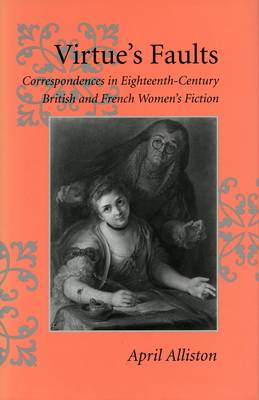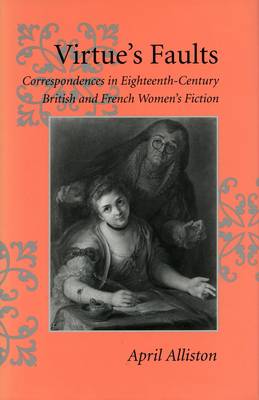
- Afhalen na 1 uur in een winkel met voorraad
- Gratis thuislevering in België vanaf € 30
- Ruim aanbod met 7 miljoen producten
- Afhalen na 1 uur in een winkel met voorraad
- Gratis thuislevering in België vanaf € 30
- Ruim aanbod met 7 miljoen producten
Virtue's Faults
Correspondences in Eighteenth-Century British and French Women's Fiction
April AllistonOmschrijving
This study focuses on fiction written by women in the eighteenth century to demonstrate how authors of the period implicitly examined and resisted patrilineal models of relationship, including the notions of literary tradition and of women's place in the family and the domestic sphere. The author's analysis of fiction from Lafayette to Austen argues that the concept of "correspondence," as exemplified in epistolary fiction, leads to a deeper understanding of the connections among French and English women's works of the period.
The author shows how coherences of plot, theme, form, and image link a group of over 100 little-known novels representing textual exchanges between female characters to form a subgenre of French and English epistolary fiction, a "fiction of women's correspondence." More canonical works, beyond the strict confines of form and period that define this subgenre, are reconsidered in relation to it, notably Lafayette's The Princess of Clèves, which is alluded to by several of the later writers. The author also shows how works by Staël and Austen at the turn of the nineteenth century display significant affiliations with the texts of "women's correspondence," even as they represent a turning away from the conventions that characterize the earlier subgenre.
Specificaties
Betrokkenen
- Auteur(s):
- Uitgeverij:
Inhoud
- Aantal bladzijden:
- 336
- Taal:
- Engels
Eigenschappen
- Productcode (EAN):
- 9780804726603
- Verschijningsdatum:
- 1/06/1996
- Uitvoering:
- Hardcover
- Formaat:
- Genaaid
- Afmetingen:
- 140 mm x 216 mm
- Gewicht:
- 562 g

Alleen bij Standaard Boekhandel
Beoordelingen
We publiceren alleen reviews die voldoen aan de voorwaarden voor reviews. Bekijk onze voorwaarden voor reviews.











